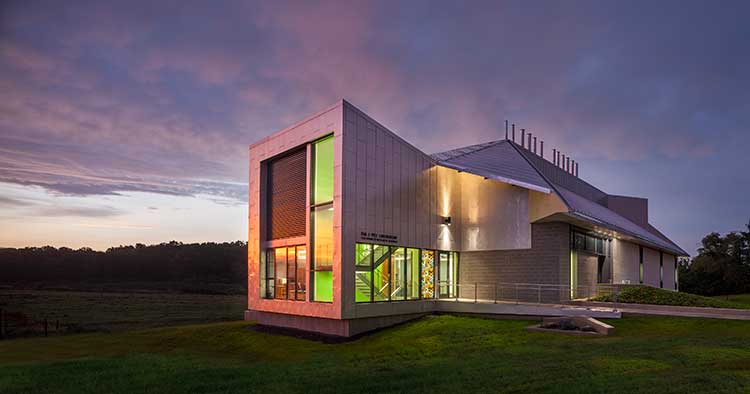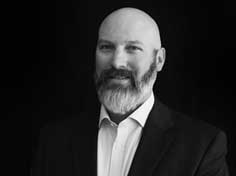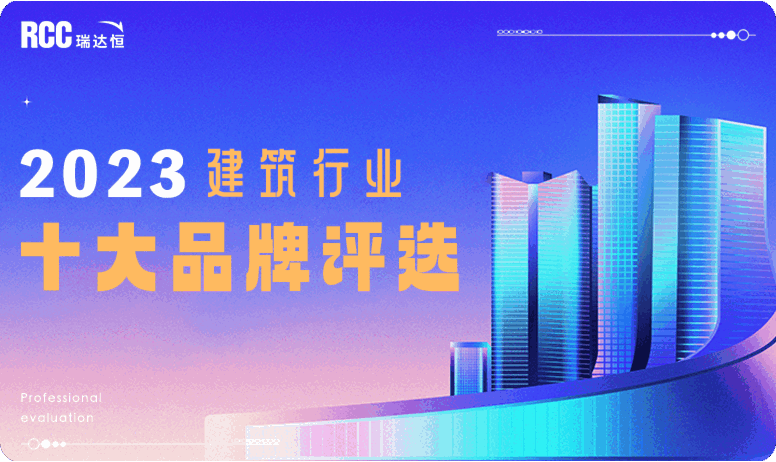Jeff Zynda:未来十年,实验室设计将大有可为
来源:畅言网 2017-09-20

Jeff Zynda, 帕金斯威尔建筑设计事务所波士顿办公室董事和科研实践主管(Jeff Zynda, Principal and Practice Leader of Perkins+Will Boston Office)
Jeff Zynda是实验室设计领域的顶级专家,致力于通过创新理念推进科研建筑的发展。过去18年中,他在欧美地区设计并规划了700多万平方英尺(65万平方米)的科研空间。Jeff现任美国帕金斯威尔建筑设计事务所董事。他作为嘉宾受邀出席8月17日到18日于北京举办的国际可持续发展实验室高峰论坛。建筑畅言网有幸采访Jeff,请他针对科研空间设计这一主题,介绍自己的见解和体会。
Jeff Zynda, has been one of the leading experts in laboratory design, devoted to the advancement of buildings for science through innovative ideas. In the last 18 years, he has designed and planned 7 million square feet of research spaces in the United States and Europe. As the principal of Perkins+Will, Jeff has been invited as a guest speaker to 2017 China Chapter Conference of International Institute for Sustainable Laboratories. During the forum, which was held 17-18 August of 2017, Archcy had the honor of interviewing him. Please read the transcript of the Q&A, in which Jeff has shared his understandings and insights in the area of academic space design.
畅言网:能否介绍您昨天演讲的主要观点?
JZ:我演讲的目的在于探讨影响科研建筑设计方式的一些根本性变化要素。归根结底这主要和“聚合”现象有关,就是指诸如生物、化学、物理等独立学科的融合和转变,经融合创建出新型科学和全新科研方法。科研建筑因此也要以与以往非常不同的方式来呼应科学需要。从设计角度而言,就是要把握两大关键要素:适应性和可持续性。这些是我昨天讲的深层要点。
Archcy: Would you please tell us some ideas of your lecture yesterday?
JZ: The purpose of my talk is to discuss some of the fundamental changes in science that are changing the way in which we design science buildings. This is primarily related to the phemonenon of “convergence”. Convergence is the combination and transformation of typically separated science disciplines such as biology, chemistry and physics, being combined into creating new types of science and completely new ways of doing research. The buildings designed for science need to respond to that in very different ways than they have in the past. There are two key aspects to that from the design perspective, adaptability and sustainability. These are the underlying tenets of my talk yesterday.

哈佛大学生物实验楼(Harvard Biological Laboratories Building) Photo from Perkins+Will
畅言网:您目前在做哪些项目?
JZ:我的工作遍及世界,许多项目在美国,包括为哈佛大学、哥伦比亚大学设计的实验室,以及费米国家实验室。另外,我希望能和与爱尔兰的一些客户建立合作联系,有机会为那里的科研企业园区规划设计创新区。
Archcy: What are you working on right now?
JZ: I am working across the world, many projects in the United States, at Harvard University, also for Columbia University, designing research laboratories as well as Fermi National Laboratory and I’m also hoping to engage some new clients in Ireland for innovation district planning for science enterprise campuses.
畅言网:您是怎样成为建筑师的?
JZ:我小时候喜欢画画。我画一些小小的城市和想象出来的地方。这对我最终的人生方向有很大影响。我父母鼓励我画画,发挥自己的创造力。我的家族里没有其他人做过建筑师,尽管家里一直有从事建造和匠作的传统。我的祖辈和曾祖辈都是木匠或木工,他们用双手构筑和建造。所以我也算是延续了家族传统,只是方向略有改变。现在,我做设计,他人建造。
Archcy: How do you become an architect?
JZ: I liked to draw when I was a kid. I would draw little cities, fantasy places. That was a big influence on my eventual life direction. When I was young, my parents encouraged me to draw and engage my creative side. There are no other architects in my family although we have a long history as builders and craftsmen. My grandfathers and my great-grandfathers were all carpenters or wood workers . They were all builders. They built with their hands. So now I’ve taken that tradition in a little bit different direction. Now I create designs and others build.
畅言网:听说您曾在意大利一家建筑工作室工作过。
JZ:从雪城大学毕业后,我为意大利Carmassi工作室工作,老板是Massimo Carmassi。那段日子很有意思,在佛罗伦萨做建筑设计也很有趣。那里可说是文艺复兴的发源地,依然存在着不少最优秀的建筑。我最早的项目之一是比萨城总体规划。这个机会非常令人兴奋。那时我才刚毕业,不仅能参与整个城市的改造和开发,还能和当地最杰出的建筑师(Massimo Carmassi)一起工作。这对我来说,是一个具有蜕变意义的经历。此后,我还在Senigallia图书馆项目上和Carmassi一起工作过。那座图书馆是建在拥有上千年历史的古罗马遗址上的现代场馆,Carmassi将它称作“介入物”,它以极其独特的方式实现了现代与古代建筑之间的并置共存。
Archcy: I heard you had joined in a studio in Italy years ago.
JZ: After I graduated from Syracuse University, I worked for a small studio in Italy named Studio Carmassi, led by Massimo Carmassi. That was an interesting time in my life, very interesting to practice architecture in Florence, Italy, one of the places where arguably the Renaissance was born and some of the greatest works of architecture exist. One of the very first projects I worked on there was the master plan for the city of Pisa. That was an exciting endeavor, straight out of school, working to establish the plan for the restoration and development of an entire city, with one of the greatest architects who has ever practiced there (Massimo Carmassi)That was a transformative event for me.Soon after that, I worked on a library in Senigallia with Carmassi. That was what Massimo referred to as an “intervention”, a modern library in a thousand year old of Roman ruin, the juxtaposition of modern architecture and ancient architecture was pretty unique.
畅言网:为什么专注于科研空间的设计?
JZ:我喜欢设计科研建筑,因为通过科学和发现,人类社会才得以进步。我看到在我设计的建筑中孕生的真实有形的科研正在促进全球社会产生积极的变化。这包括对人类健康,基础设施发展和世界进步带来的积极影响。我设计的建筑并不在于自身,而是建筑内部发生的事真正关系到科学进步,我钟爱这点。我有幸和世界上最杰出的人共事,包括诺贝尔奖得主和其他优秀的科研人员,和他们一起开展实验室设计,支持他们的研究工作。这让我感觉自己似乎对他们的工作做出了微小的贡献,这对我很重要。
Archcy: Why do you focus on designing research spaces?
JZ: I quite enjoy designing buildings for science because it is through science and discovery that we advance as a human society. I see the real tangible outcomes of the buildings that I design are contributing to a global societal shift for the positive. There are positive impacts on human health, the advancement of infrastructure and the betterment of the planet. My buildings are not about the buildings themselves. They are about what will happen within the buildings. It's really about the advancement of science, I love it. I’ve had the honor to have worked with some of the most brilliant minds in the world. I have worked with Nobel laureates and other brilliant researchers on designing laboratories to support their research. In some small way, I like to feel as if I've contributed to their work. That's important to me.
畅言网:您事业上的非常重要的时刻是什么?
JZ:有个很有意思的故事。有天晚上,我和家人一起看《60分钟》,那期节目在讨论再生医学的进展。节目关注受伤士兵组织和身体部位再生的相关研究。我认出了那位被采访人,然后才意识到采访地点正是我设计的实验室。那一刻特别震撼,它将我的个人工作和科研发展联系了起来,尽管后者比科研场所本身重要得多。这可以说是一个非常重要的时刻,它坚定了我做科研空间设计的决心。
Archcy: What is the wathershed moments in your career?
JZ: There is a funny story I'd like to tell. One evening, I was watching an American news program called "60 Minutes" with my family. They were talking about advancement in regenerative medicine. In particular, it was focus on research about regenerating tissue and body parts for injured soldiers. I recognized the person they were interviewing on the news. I then realized they were conducting the interview inside a laboratory that I had designed. It was a powerful moment that linked the work that I had personally done to the advancement of research that was so much more important than the physical environment in which it was completed. That was the watershed moment so to speak. It solidified my commitment to designing for science.
畅言网:如何摆脱日常琐事,找寻灵感?
JZ:一切事物都能给我灵感。每天的每件事中,灵感无处不在;你只需要去主动寻找。许多人日复一日地生活,但并没有真正地去“看”世界。我从日常生活,也从旅行中发现灵感。事实上,这是我第一次来中国。北京是令人着迷的城市。无论从尺度,历史或是多样性上,北京都和我以往到过的任何城市不同。作为个体,我们通过体验世界不同的地方获得学习和成长;反过来,这种经历也挑战并改变着我们的视角。新的事物和事件开阔了我的眼界,这些都是我的灵感来源。我看到这些对我做人和从业都是有影响的。
Archcy: How do you find inspiration and break from daily grind?
JZ: I find inspiration in just about everything. You can find inspiration in every event every day in the world; You just need to be looking for it. Many people go through their lives doing their jobs day in and day out, and they aren't really seeing the world with their eyes wide open. I find inspiration from everyday life but also from travelling to new places. In fact, this is my first time in China. I am fascinated by the city of Beijing. It is unlike any other city I have ever experienced, in terms of scale, history and diversity. I think we learn and grow as individuals, from experiencing different parts of the world which in turn challenges and changes our own perspectives. I suppose that's where I draw inspiration from, those new events, things that are new to me, that broaden my perspective. I see how I can start to make that part of who I am as a person and who I am as an architect.
畅言网:您常和其他建筑师保持联系吗?
JZ:我确实会和许多建筑师交往。不过,真正让我喜欢联系的更多的还是客户以及科研人士,我会去了解他们希望解决何种问题,遇到哪些挑战。我认为科学很迷人。建筑当然也很迷人,但还是不如科学。或许我入错了行当,我也不知道。
Archcy: Do you keep in touch with the other architects?
JZ: I do associate with many architects. But I think the connections I really enjoy aren't so much with the architects as they are with some of my clients, with engaging the research community and understanding what types of problems they are trying to solve, what are their challenges. I find science fascinating. I find architecture fascinating as well. But perhaps maybe not as much as I find science fascinating. Maybe I am a misplaced person. I don’t not know.
畅言网:如何看待建筑这一职业?
JZ:这一职业正在发生变化。建筑师从过去的主营造者正在变成统筹协调多种不同职业与专业的规划者。今天的建筑师要了解建筑营造相关的更广范围的知识,不仅有建筑或设计,还有项目交付,施工方法和工程技术的变化。我们正在从多数情况下的单独创作者转变为若干建筑事件的规划者,把多个不同学科的人才汇集起来,在各自的能力范围内以共同合作的形式贡献力量。在某种层面上,我刚提到的“聚合”现象也发生在建筑领域。包括建筑和工程在内的历来独立的学科正在融合成一个整体。
Archcy: How do you perceive the profession of architecture?
JZ: The profession of architecture is changing. The tradition of years past of the master builder are changing to now being a choreographer of many different professions and trades. Architects today need to understand the broader realm of what makes a building, not just the architecture or design, but project delivery, how construction methodologies are changing, how engineering techniques are changing. We are moving from singular author in many senses to being a choreographer of architecture event that was product of many different professionals coming together and all contributing in their own capacities. In a certain sense, the phenomenon I was speaking of in terms of science about “convergence” is happening in the profession of architecture as well. Different traditionally separate disciplines such as Architecture and Engineering are merging to become one.
畅言网:您会鼓励子女学习建筑吗?
JZ:我经常思考这个问题,但没有好的答案。我的儿子和我很不一样。如果他对建筑有兴趣,我会尽我所能去鼓励他。建筑现在是个很难的职业,比过去要复杂。不过,它也是值得拼搏的职业。我不会阻止他学建筑,但也不会以不当的方式来引导他去从事违背他内心真实意愿的职业。我在这里更多地是在表达我自己的教育观点。如果他想当厨师,图书馆员或是建筑师,只要这是他想做的事,我都觉得没问题。对我女儿也是一样的。
Archcy: Would you encourage your son to learn architecture as well?
JZ: I've often thought about that. I don't have a good answer. My son is a different person from who I am. If architecture is something that he is interested in, by all means I'd encourage him. It is a difficult profession these days. It is more complicated than it was ever been. But it is also incredibly rewarding. I wouldn't dissuade him from trying to engage in architecture, but I don't want to unduly influence him to become something that's not genuinely who he wants to be. That's more of my parental perspective than an answer to your question. If he wants to be a chef or a librarian or an architect, I am okay with anything he wants to do. The same applies to my daughter.

宾夕法尼亚州立大学佩尔先进生物研究实验室(Pell Laboratory for Advanced Biological Research at the Pennsylvania State University) Photo by Warren Jagger Photography
畅言网:三年前,我采访了Perkins+Will旧金山办公室负责人Peter Busby,他表示公司一直重视可持续性。能谈谈您对可持续性的理解吗?
JZ:我强烈认同建筑,特别是科研建筑应具有可持续性和环保责任。科研建筑是世界所有建筑中能耗最高的建筑类型。相比其他建筑,减少科研建筑能耗和碳排放量的机遇也更大。科研建筑比普通办公建筑消耗的能源高60%或以上。在存在更大机遇的同时,如果科研建筑不采用可持续手段,地球将受到更多的惩罚。在关注科研建筑以及可持续性机遇时,其实是有减少能耗的简单方法的,但很多设计师并没有关注这些,因为他们关注更多的是诸如怎样达到实验室的技术和安全要求等常规问题。在满足这些要求的同时,实验室其实可以通过前期分区和模块化设计等简单的规划手段极大地降低能耗。整体而言,科研建筑的设计师并未达到当今科技发展的要求,更远远落后于着眼于未来的可持续设计要求。我一直坚持撰写相关文章,目的就是希望提高业界对此的关注,我们有大把的机会使用许多低成本或者不增加成本的方式来落实这些内容。我们只需要在设计科研建筑时以不同的方式去重新关注这些方面。
Archcy: Three years ago, when I interviewed Peter Busby, head of San Francisco Office of Perkins+Will, he said that your firm is focusing on sustainability. What is your understanding of sustainability?
JZ: I have a strong opinion about sustainability and responsibility in architecture especially in research buildings. They are some of the largest energy consumers of any building types on the planet. There are greater opportunities to reduce energy consumption and reduce carbon emissions in science buildings than there are in the other building types. Comparatively, research buildings might use 60% or more energy than standard office buildings. While the opportunities are greater, the penalty the planet pays for not taking sustainable approaches in research buildings is much greater. When we look at buildings for science and the opportunities to be more sustainable, there are simple techniques to employ to reduce energy that many designers aren't focused on because their focus has traditionally been on meeting the technical or safety requirements of laboratories. These can still be met while significantly reducing energy through simple planning strategies such as upfront zoning and modularity of laboratory building. I think that the industry as a whole, people who design buildings for science are behind where they need to be today and far behind in thinking about sustainable solutions for the future. I continuously write about these issues in order to bringing attention to the issues that there are huge opportunities that cost very little or nothing to implement. We just need to be re-focusing our efforts in different ways when designing buildings for science.
畅言网:在欧洲做设计有什么特殊之处?
JZ:在国际型事务所工作之所以有趣,是因为能见识到世界各地从事科研的不同方式。解决同一问题并没有通用的手段。当地传统和法规都对解决科研建筑问题的方式产生影响。对我来说,有意思的是可以针对同一问题,在世界不同地区,采用截然不同的解决方式。不断拓展视野,观察全球各地的多元化发展是很重要的,这既能推动我们的实践工作,也有助于设计我们专注的建筑类型,因为每个参与者都有不同的视角。它与工作方式的对错无关,这都是为了能够拓展视野与认识。每一次全球化的工作经历加深了我对实验室设计最佳实践的见解,希望一直都有这样的经验积累。
Archcy: What makes it special to design projects in Europe?
JZ: The real interesting thing about working in a global practice is being able to see how different parts of the world engage in science. There is no universal approach to solving the same problems. The local customs and regulations are all playing a part of the recipe for how one responds to solving the science building problem. For me, the interesting thing is that you can take the exact same topic and look to four parts of the world have four very different solutions. It is part of that broadening perspectives, the diversity you see across the globe that's important to informing the practice we have, designing the types of buildings we design because each contributor has a unique perspective. It is not about a right or wrong approach, it is all part of contributing to a broader perspective and understanding. Each of the global experience has added to my perspective on best practice on laboratory building design and I hope that it continues to do so.
畅言网:如何理解“全球本土化”?
JZ:“全球本土化”指的是在意识层面上的全球化影响,它所针对的是我刚才讨论的那种大尺度话题,比如说如何处理科学方面的问题?然后又如何完成本土化的交付?这关系到全球化视角和本土化交付。如何实现机会的最大化?因为一切最终都会回归到建筑实体上,而建筑终归是建在特定地点的,相较于全球经济活动,它充分运用了特定地点的建筑传统习俗、项目交付方法、建筑传统文化等等。 “全球本土化”在于平衡两大问题,提供尽可能充分发挥这两方面优势的创新方案。
Archcy: How do you define the term "glocal"?
JZ: "Glocal" is about the global influences at ideological level, large scales issues such as what I was discussing, how one solves the problems in science, but then how you deliver them locally? It is about global perspective and local delivery. How do you maximize those opportunities? Because everything comes back down to a building, which is built in a specific place and takes advantage of traditions and customs of building in that particular location, the project delivery methods, the building traditions and cultures, compared to now what is global economy, a global agenda. Glocally is about balancing those two issues and offering an innovative solution that embraces the best of both aspects.
发表评论
最新评论

 投稿
投稿









